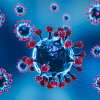
 Mrs. Mayuri Mathur
Mrs. Mayuri Mathur
Down Syndrome: A Genetic Disorder
Down syndrome is a chromosomal disorder, signifying intellectual disability, a distinctive facial appearance, and weak muscle tone (hypotonia) in infancy. These individuals experience cognitive delays; however, their intellectual disability is usually mild to moderate. Although the life span of children with down syndrome has increased over the past three decades, these individuals still have a shorter life expectancy than healthy individuals.
Appearance and Associated Conditions
People with Down syndrome often hold a characteristic facial appearance with a flattened appearance to the face, outside corners of the eyes pointing upward, small ears, a shorter neck, and a tongue that sticks out of the mouth. These individuals may also have numerous birth defects. Nearly 50% of all affected children are born with a heart defect. Many of them have small hands and feet and a single crease across the palms. Few may also have digestive abnormalities, such as an intestinal blockage.
Down syndrome sufferers are at increased risk of developing medical conditions like gastroesophageal reflux (leakage of acidic stomach contents into the food pipe) and celiac disease (intolerance of a wheat protein called gluten). Nearly 15% of these people have an underactive thyroid gland (hypothyroidism). These Individuals also have an increased risk of hearing and vision problems. Furthermore, a few may develop cancer of blood-forming cells (leukemia).
Children with Down syndrome show delayed development and behavioral problems. They can have growth problems and develop speech and language later. Additionally, their speech may be difficult to understand. They may show behavioral issues like attention problems, obsessive/compulsive behavior, and stubbornness or tantrums. A few may suffer from developmental conditions called autism spectrum disorders, which hinder communication and social interaction.
People with Down syndrome may experience a progressive decline in thinking ability (cognition) with age, usually around age 50. They may also be at an increased risk of developing Alzheimer's disease, a brain disorder that causes a gradual loss of memory, judgment, and ability to function. Approximately 50% of adults with Down syndrome develop Alzheimer's disease in their fifties or sixties.
Causes and Risk Factors
• The extra chromosome 21 is responsible for the appearance and developmental challenges that can occur among people with Down syndrome.
• The mother's age also increases the risk of having a baby with Down syndrome. Women 35 years or older are at an increased risk of having a Down syndrome-affected pregnancy than women who become pregnant at a younger age. However, most babies with Down syndrome are born to mothers under 35 years old because there are many more births among younger women.
Preliminary Diagnosis of Down Syndrome
Two basic types of tests can detect Down syndrome during pregnancy.
1. Screening Tests
A screening test can predict the chances of having Down syndrome in pregnancy. These tests do not provide an absolute diagnosis but are safer for the mother and the developing baby. Screening tests include a medley of a blood test, which estimates the number of substances in the mother's blood (e.g., MS-AFP, Triple Screen, Quad-screen), and an ultrasound, which constructs a picture of the baby. Ultrasound looks for the fluid behind the baby's neck; an extra fluid in this region could indicate a genetic problem. There are rare cases in which these tests can give abnormal results without any abnormalities in the baby, and sometimes the opposite is true as well.
2. Diagnostic Tests
Diagnostic tests can typically detect if or not the baby will have Down syndrome, but they can be riskier for the mother and developing baby. Diagnostic tests usually follow a positive screening test to confirm a Down syndrome diagnosis. Types of diagnostic tests are:
• Chorionic villus sampling (CVS)- studies material from the placenta
• Amniocentesis- it studies the amniotic fluid (the fluid from the envelope surrounding the baby)
• Percutaneous umbilical blood sampling (PUBS)- studies blood from the umbilical cord
• These tests observe chromosome changes that would indicate a Down syndrome diagnosis.
It is to be noted that neither screening nor diagnostic tests can predict the full impact of Down syndrome on a baby.
Treatment and Management
The management of patients with Down syndrome involves physicians from different disciplines. Parental education remains a crucial element in the management of Down syndrome. Parents should be aware of the different possible conditions associated with down syndrome so that they can seek treatment appropriately. Down syndrome treatment is primarily symptomatic, and complete recovery is impossible.
These patients must get hearing and vision assessments, as they are more prone to cataracts. They must get thyroid function tests annually and, if deranged, should be managed accordingly.
A balanced diet, regular exercise, and physical therapy are necessary for optimum growth and weight gain; however, feeding problems tend to improve after cardiac surgery.
A cardiac referral is necessary for all patients regardless of the symptoms of congenital heart disease, which, if present, should be corrected within the first six months of life to guarantee optimum growth and development of the child.

Mrs. Mayuri Mathur
Mrs. Mayuri Mathur is a Senior Medical Writer (Patient education and digital) and seasoned content creator with a rich tapestry of expertise spanning over ten years. With a diverse background in content creation, she brings a wealth of experience to the table, from crafting insightful medical articles to developing comprehensive patient education materials, dynamic press releases, and captivating brochures and website content. Throughout her illustrious career, she has demonstrated an exceptional knack for distilling complex medical concepts into easily understandable content, making her a trusted resource for both professionals and lay audiences alike. Her meticulous attention to detail and innate creativity have enabled her to deliver content that not only informs but also engages and inspires. Whether elucidating intricate medical procedures or crafting compelling marketing materials, her versatility and dedication shine through in every project she undertakes. Her passion for writing, coupled with her profound understanding, makes her an invaluable asset to any team or project. In a constantly evolving digital landscape, where effective communication is paramount, Mrs. Mayuri Mathur stands out as a beacon of excellence, consistently delivering top-notch content that resonates with audiences across diverse platforms.

.png)

.png)
.png)




Please login to comment on this article